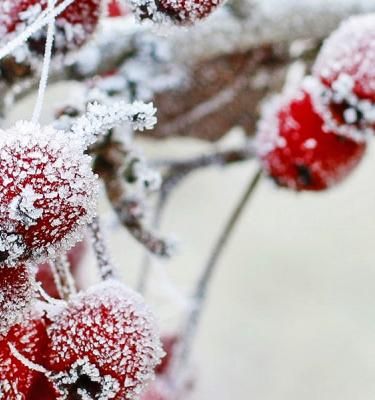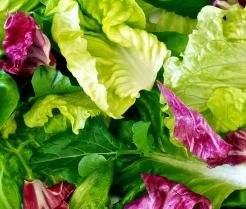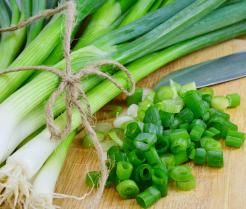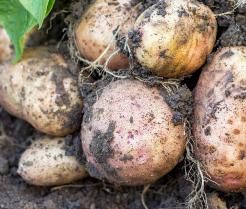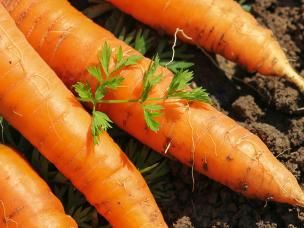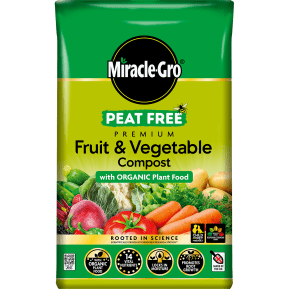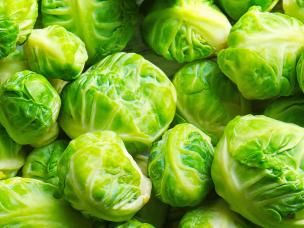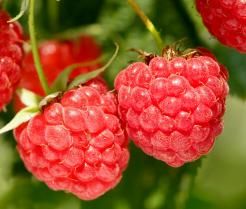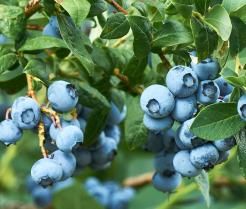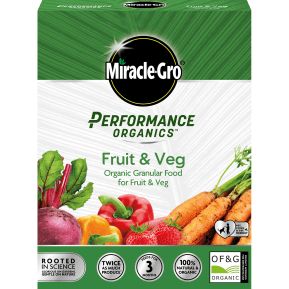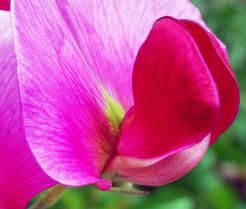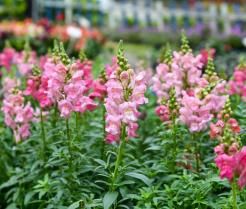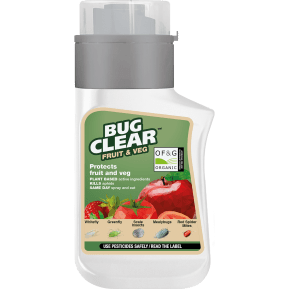January Gardening: Your Monthly Garden Guide
If your New Year’s resolution is to put your green fingers into action, then you’ll be pleased to learn that January is the ideal month to lay the foundations for a fruitful year of gardening. The weather may still be cold but, if you look, you can see the first signs of spring outdoors, with bulbs poking up out of the ground and the days growing ever so slightly longer. If you’re wondering what to grow in January, it’s the perfect time to plant bare-root shrubs and trees, while inside there are plenty of seeds to be sown. Just remember – if you are planting new seeds or young plants, make sure you use a peat-free, good quality compost to give them the best start to the new year.
What to plant in January and other seasonal gardening tips
If you’re considering what to do in the garden in January, choose a category below for lots of gardening ideas and advice to get your year off to a great start. Whether you’re planning for a garden full of flowers or looking forward to huge harvests of tasty fruit and vegetables, there’s plenty to get stuck into in the garden in January.
When you think about planting fruit and veg, January might not be the month that springs to mind, but you’d be surprised at how much you can get started. It’s the perfect time to be thinking ahead – spring and summer harvests start here. So, picture your future dinner table, pick your favourites, and get those roots in the ground.
Vegetables
The groundwork for those cooling salads on a hot summer’s day starts in January. Whether you’re looking to grow refreshing celery and spring onions, or some leafy greens, there are plenty of vegetables to grow in January. Don’t forget that your root vegetables will also be ready for the harvest this month – just in time for those warming roast dinners.
What vegetables to plant in January
Even as the temperatures drop and the frosts settle in, there are still vegetable seeds to sow in January, and luckily this is something you can do indoors where it’s warm and dry. If you don’t have a greenhouse, it’s worth investing in a windowsill propagator with a heated mat to get warmth-loving seeds off to a good start. When it comes to choosing veg seeds to sow in January, the following will thrive either indoors or in the greenhouse:
- Celery
- Celeriac
- Broad beans
- Salad leaves
- Spinach
- Spring onions
- Turnips
Plant seedlings of the following
It’s also time to start thinking about chitting your first early potatoes. Give them a bright, frost-free spot – like a well-lit windowsill – and let them sit for a few weeks to sprout. Most will start showing signs of life in February, but you might spot a few eager ones popping up in late January, so it pays to keep an eye on them!
When planting new veggies, it’s always a good idea to use a peat-free, organic compost to help control water availability and promote strong root growth.
Growing vegetables in January
January is the perfect time to take stock of your garden and tackle a bit of maintenance, setting the stage for your veggies to thrive in the months ahead.
Start from the ground up and focus on improving your soil quality. Spreading a thick layer of well-rotted, peat-free compost – or another soil improver such as bark – over your veggie beds will greatly improve the soil structure and nutrient levels. Make sure your layer is at least 5cm (or 2.5 inches) thick, otherwise it won’t provide effective nourishment.
If you’re growing Brussels sprouts, kale or any other brassicas, make sure you remove any yellowing leaves, as they can harbour pests.
Finally, look ahead to the next few weeks and start buying your tomato and chilli pepper seeds now. It’ll be time to sow them before you know it!
What vegetables to harvest in January
Wrap up warm and head out to your vegetable bed to pick some winter vegetables for soups and stews. Vegetables to harvest in January include:
Fruit
If you’re thinking about fruit to plant in January then, provided the winter conditions aren’t too severe, currants and berries are ideal options. It’s also a great opportunity to provide some much-needed care to any fruit trees and bushes you already have in your garden, to give them the best chance of flourishing in spring.
What fruit to plant in January
Provided the ground isn’t waterlogged or frozen, there are plenty of fruit bushes and fruit trees to plant in January, including currants and berries. The plants are in their dormant state, so planting them now gives the roots time to settle in and establish themselves before growth starts again in spring.
You can often buy fruit trees and bushes as bare root plants in January, which is a very cost-effective solution if you’re intending to grow lots of fruit this year. If you are planning to plant bare root fruit trees or bushes in January, prepare the ground ahead of time and plant them as soon as you get them, to help prevent the roots from drying out. Once you’ve chosen a suitable location for your plant and dug a generous hole, fill the hole back in with a mixture of soil and a peat-free compost. This will help your fruit plants to put down strong roots, and will provide optimal water control during their first few weeks in your garden.
These fruit trees and bushes can all be planted in January:
These fruit trees and bushes can all be planted in January:
Growing fruit in January
If you have several of them, force rhubarb plants by putting a cover (an upturned bucket will do) over the crowns to stimulate them into producing sweet, juicy stems in early spring. Any wall-trained peaches should be covered with a ‘tent’ of polythene to protect against peach leaf curl disease.
Flowers and bulbs
It may not seem intuitive to plant flowers in January, but there are a few species that will flourish in winter conditions, and plenty more if you have access to a propagator. Elsewhere in your flower garden, there’s plenty of maintenance to do in preparation for spring growth.
What to plant this month
At this time of year, most of the flower and bulb planting goes on indoors, but outdoors there are still a few flowers to plant in January, especially if your garden needs some winter colour. Ideal flowers to plant outdoors include:
Growing flowers and bulbs in January
Even if you decide not to plant flowers in January, there’s still plenty of flower maintenance in the garden to focus your efforts on.
It’s a good time of year to cut back the dead or soggy leaves from perennial plants and deciduous ornamental grasses such as reedgrass and tussock grass (Calamagrostis and Deschampsia). With your perennials, leave a few dead stems standing to provide homes for overwintering wildlife. If you have any silvergrass or fountaingrasses (Miscanthus or Pennisetum) , wait until early spring to cut these, as they need a bit more protection from winter frosts.
If you’ve had pots of forced daffodils and hyacinths flowering indoors over winter, leave them somewhere bright until the foliage dies back, then store the daffodil bulbs in a frost-free place for replanting next autumn. The hyacinth bulbs can be planted outside in January and should flower again in a year’s time.
You can also take this opportunity to deadhead any winter bedding (such as violas) to promote a second flush of flowers in early spring. You should also continue deadheading your winter-flowering pansies to ensure they flower during mild weather.
Old hellebore foliage should be removed to stop the spread of hellebore black spot and make the flowers easier to see. Finally, if you have Wisteria, give this climber its winter prune in late January, cutting back last year’s summer growth to two or three buds from the main framework.
Growing houseplants in January
Your houseplants need watering less frequently in January, as many plants grow slowly over winter or go dormant completely. Only water them when the compost surface feels dry to avoid waterlogging them. However, it’s worth bearing in mind that central heating can dry out the air, so there’s a fine balance between not overwatering your plants, and not letting them dry out. Consider using a humidifier, placing plants on pebble trays, or misting them (unless, like succulents, they dislike wet leaves).
Daylight is also much more limited in January, so consider cleaning your windows and moving plants closer to them to ensure they have maximum exposure to light. If you do move your plants closer to windows, make sure you don’t move them close to any that are poorly insulated, as you want to avoid subjecting them to cold draughts. Try to keep them away from doors, too.
You can also help your plants to absorb more light by dusting the leaves with a damp cloth.
Finally, remember to check for pests; dry air can invite spider mites, so inspect the leaves (the undersides particularly) of your houseplants for fine webbing.
Lawn care in January
When it comes to lawn care in January, the need to mow your lawn should be less frequent. With shorter daylight hours and colder temperatures, your grass shouldn’t grow too much. In fact, if it’s frosty or there’s a layer of snow, you should refrain from stepping on your lawn at all, as it can damage the grass. Just try to keep your lawn free of any debris such as leaves, as your grass will get little light in January as it is.
With little lawn maintenance required for January, your time this month may be better spent preparing for spring. Make an inventory of your tools to ensure you have everything you need to keep your lawn healthy and looking great once the warmer months come, and take the opportunity to make sure your existing tools are in good condition. Sharpen your cutting tools and consider putting together a sand and motor oil mixture to clean your tools with when it does come time to use them.
It's also a good opportunity to stock up on anything else you might need for the spring months, such as naturally derived lawn feeds and weed controls.
